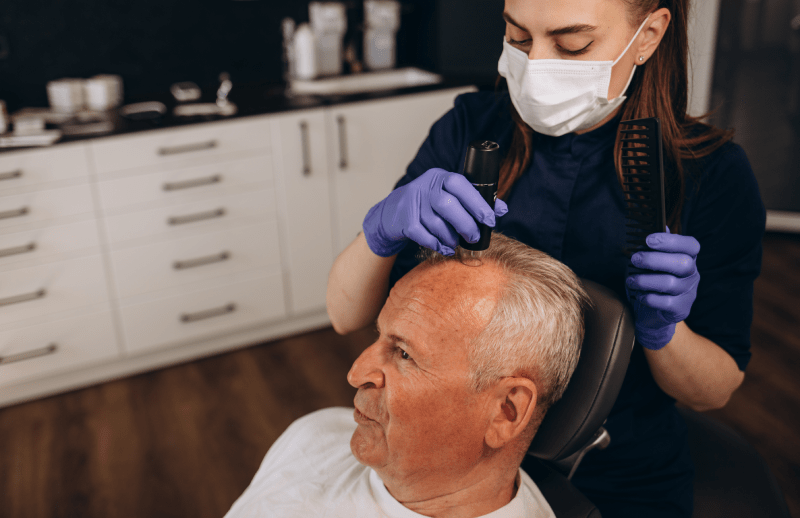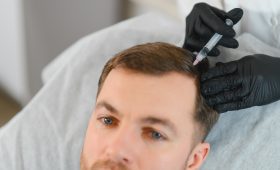Why Has Turkey Become Such A Popular Destination For Hair Transplantation?
Turkey has become a global hub thanks to its strategic location for patients coming from both Europe and Asia, as well as significant investments in health tourism, incorporating the latest technologies and specialized teams. Medical specialists in the country are trained to international standards in hair transplantation and have experience with thousands of successful operations. Furthermore, the cost advantage provided by the foreign exchange rate allows them to offer the same quality of service at much more affordable prices compared to other countries. This high-quality, affordable price balance has made Turkey a worldwide attraction. Ease of travel and accommodation are additional factors that boost this popularity.
What Criteria Should Be Prioritized When Choosing The Best Clinic?
When choosing a hair transplant clinic, you should primarily focus on the criteria of experience, transparency, and hygiene. The clinic’s history in this field, the number of operations performed, and the statistical data of its results are highly important. You should also check whether the clinic has international health accreditations. In line with the principle of transparency, you must clearly understand what is included in the price quote offered to you and what potential extra costs might be. It should be remembered that since this is a medical procedure, the hygiene standards and sterilization procedures of the operating environment are the most decisive factors for your health.
Which Techniques Are Used In Hair Transplant Operations?
Two popular techniques are fundamentally used in the field of hair transplantation: FUE (Follicular Unit Extraction) and DHI (Direct Hair Implantation). FUE is based on the principle of taking hair follicles one by one and implanting them into previously opened channels, yielding effective results in wider areas. DHI, on the other hand, uses a specialized pen (Choi Pen) to place the hair follicles directly into the recipient area, allowing for denser implantation and generally faster recovery. The clinic should clearly explain whether they are experts in both techniques and why they recommend the most suitable method for you.
What Is The Most Important Key To A Successful Hair Transplant?
The key to a successful hair transplant is not just good surgical application, but also the correct management of the donor area and establishing realistic patient expectations. Accurately calculating the number of grafts to be taken from the donor area ensures that this area is not damaged and maintains its natural appearance in the future. The clinic’s preparation of a personalized plan based on the patient’s current condition and potential for future hair loss, achieved through detailed hair analysis before the operation, will maximize the quality of the result.
How Are The Clinic’s Hygiene And Sterilization Standards Checked?
The first step in checking a clinic’s hygiene and sterilization standards is to examine the accreditation documents issued by international health organizations. You should also request detailed information about the cleanliness of the clinic’s operating rooms, the use of single-use materials, and infection control procedures. Experienced clinics share this information transparently and may allow you to see the operating environment during your visit. If you are working with your health tourism partner Cure Holiday, they will have checked all these quality documents for you in advance, leaving no room for doubt.
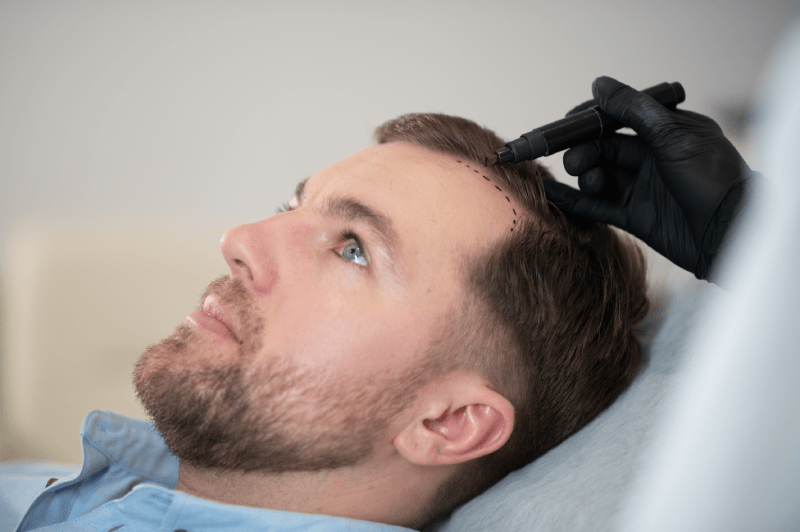
What Is The Importance Of Graft Count In Hair Transplantation?
The graft count is a critical factor that determines both the cost of the operation and the density and naturalness of the result. A graft is a piece of tissue that usually contains 1 to 4 hair follicles. The clinic must accurately determine the number of grafts you need and plan in a way that does not exceed your donor area’s capacity. Implanting too few grafts leads to insufficient density, while harvesting too many grafts can cause permanent thinning of the donor area. Therefore, it is mandatory for the clinic to provide a detailed analysis on this matter.
What Should The Post-Operative Care Process Be Like?
The post-operative care process is vital for the healthy survival of the transplanted hair follicles. You must receive detailed and written instructions from the clinic on how the first wash should be done, which shampoos to use, and what to watch out for during the scabbing process. Protecting the transplanted area from bumps, sun, and excessive sweating is of great importance, especially during the first 15 days. Strict adherence to these instructions ensures that over 90% of the transplanted hair will successfully grow. Your clinic is expected to offer regular follow-up consultations spanning over 1 year.
When Do Hair Transplant Results Start To Become Visible?
Hair transplant results do not appear overnight; this is a process of patience and development. Within 2-4 weeks after the operation, most of the transplanted hairs fall out in a natural process called “shock loss.” This is completely normal and no cause for concern. New and permanent hair usually starts growing after 3-4 months. The increase in density and the maturation of the hair become noticeable in the 6th-8th months, but it is necessary to wait 12 to 18 months for the final and most natural appearance.
How Do Hair Transplant Prices Vary?
Hair transplant prices fundamentally vary according to the graft count, the chosen technique (such as FUE, DHI), and the package content offered by the clinic (accommodation, transfers, interpreter services). While a high price does not always guarantee the best quality, an extremely low price may indicate that quality and hygiene standards are being compromised. When researching prices, you should focus not only on the number but also on the expertise of the team performing the operation and the clinic’s accreditations. Finding the best price-performance balance is key to a successful experience.
What Tests Should Be Performed Before A Hair Transplant?
Since hair transplantation is a surgical operation, various tests are performed to assess the patient’s general health status. These tests generally include infectious disease tests like Hepatitis B, Hepatitis C, HIV, and tests that check the blood clotting time. In addition, biochemical tests may be requested in some cases to check the patient’s general blood panel and to control for chronic diseases (like diabetes). A reliable clinic will absolutely perform all these tests before the operation to avoid risking the patient’s health.
Is Pain Felt During The Operation?
Since the hair transplant operation is performed under local anesthesia, no pain or discomfort is felt during the procedure. There might be a slight stinging or burning sensation during the anesthesia application, but this subsides very quickly. Some clinics minimize this initial pain sensation by using needle-free anesthesia devices (pressurized jet injection). Once the anesthesia takes effect, the patient is completely numb and spends the rest of the operation comfortably. Any slight soreness felt after the operation can be easily managed with painkillers.
What Is Shock Loss In Hair Transplantation And When Does It Occur?
Shock loss is a temporary and completely normal process experienced by almost all patients undergoing hair transplantation. Approximately 2 to 4 weeks after the operation, the hair strands on the transplanted hair follicles begin to shed. This is a sign that the hair follicles have entered the resting phase (telogen phase) and are preparing to produce new, permanent hair strands. Experiencing shock loss does not mean the transplant has failed; on the contrary, it is a biological response indicating that the hair follicles have successfully taken hold.
What Is The Ideal Age Limit For Hair Transplantation?
While there is no definite upper age limit for hair transplantation, the lower age limit generally coincides with the period when hair loss has stabilized, which is around the mid-20s. In transplants performed at a very young age (18-22), since the shedding process has not yet completed, other non-transplanted hairs may continue to fall out, leading to an unnatural appearance later on. The ideal time to perform the procedure is when the shedding pattern is clear and the hair in the donor area has matured. Your doctor’s analysis will determine the most appropriate timing for you.
Why Is The First Wash After The Operation So Important?
The first wash is critically important for cleaning the transplanted grafts without dislodging them and reducing the risk of infection in the area. This wash is usually performed meticulously by the clinic 2 or 3 days after the operation, using a special lotion and shampoo. This prevents the patient from damaging the newly transplanted sensitive follicles by making wrong movements on their own during this stage. Before leaving the clinic, you must receive detailed and practical training on how to perform subsequent washes.
What Are The Failure Rates In Hair Transplantation?
When modern FUE and DHI techniques are used in hair transplantation, the graft survival rate is generally very high, ranging between 90% and 98%. Although the failure rate is generally low, this situation mostly results from inexperienced teams applying incorrect graft harvesting/placement techniques or the patient not adhering to post-operative care instructions. Choosing a reliable and experienced clinic minimizes the risk of failure. International partners like Cure Holiday only cooperate with accredited clinics that have high success rates.
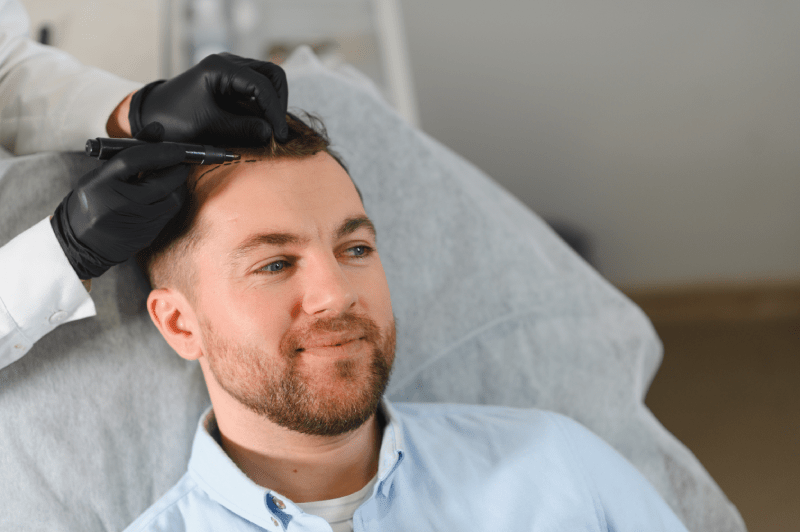
How Long Is The Recovery Time For The Donor Area?
The recovery period for the donor area is generally faster than the recipient area and is usually completed within 1-2 weeks after the operation. Although slight redness and scabbing are observed in the first few days, these scabs usually fall off within 7-10 days. In a fully healed donor area, the harvested areas become almost unnoticeable as the hair grows out. It is important to regularly use the special lotions and ointments recommended by your doctor to speed up the healing process.
Why Should Smoking And Alcohol Be Avoided Before A Hair Transplant?
Smoking and alcohol must be strictly avoided before and after the operation because they negatively affect the body’s blood circulation and oxygen-carrying capacity. Smoking constricts the capillaries, preventing the transplanted hair follicles from receiving the necessary oxygen and nutrients, which can lower the survival rate. Alcohol, on the other hand, thins the blood, increasing the risk of bleeding during and after the operation. Discontinuing these substances at least one week before the operation is a critical step for a healthy recovery process.
How Should Travel Planning And Accommodation Be Arranged?
If you are planning to travel to Turkey for a hair transplant, it is recommended that you set aside a minimum of 3 days for the operation and the initial stages of recovery. The operation is typically on the first day, and the check-up and first wash are usually completed on the second day. For accommodation, you should prefer hygienic and comfortable hotels contracted with the clinic or included in the package. Health tourism partners like Cure Holiday will organize all logistical details on your behalf, from airport transfers to accommodation, making the process extremely comfortable and stress-free for you.
How Is Density Determined In Hair Transplantation?
The targeted density in hair transplantation is personalized according to the patient’s existing hair density, hair strand thickness, hair color, and wave pattern. The number of grafts per square centimeter determines how dense the transplant will appear. While high density is targeted for the frontal hairline, less density may be sufficient for the crown areas. The clinic must pay attention not only to the graft count but also to the natural exit angle and direction of the hair when planning the transplant, which guarantees the natural appearance of the final result.
Are There Special Products That Should Be Used After The Operation?
Yes, it is important to use specially formulated products during the post-operative period to protect the health of the transplanted hair follicles and support the recovery process. These generally include special pH-neutral and chemical-free shampoos, healing-accelerating foams or lotions, and vitamin-supported hair serums. Your clinic should provide these products and give you detailed information on how to use them. The use of these products helps the scabs shed quickly and the hair follicles strengthen.
Is Eyebrow And Beard Transplantation Different From Hair Transplantation?
Eyebrow and beard transplantation is fundamentally the same as hair transplantation, but it differs in terms of technical sensitivity and details. In eyebrow and beard transplantation, the angle and direction of the hair follicles must be much more horizontal and precise to ensure a natural look. Single grafts are usually preferred, and since the recipient area is thinner than the scalp, the operation requires more expertise. You should ensure that the clinic is experienced in these specialized types of transplants, as a wrong angle can lead to a permanent and unnatural appearance.
Can Women Have Hair Transplantation?
Yes, women can also undergo hair transplantation, but the causes and patterns of hair loss in women differ from men. Hair transplantation in women is usually performed to compensate for regional losses due to genetic shedding, scars, burns, or hair pulling (trichotillomania). Shave-free FUE or DHI methods are often preferred for female patients, which speeds up the return to social life. For a successful result, it is essential that the cause of the shedding is correctly diagnosed by a dermatologist first, and then the transplant plan is made.
How Long Should Sports Be Avoided After A Hair Transplant?
Avoiding sports after a hair transplant is mandatory to prevent the transplanted grafts from shifting and to avoid the risk of infection through sweating. It is generally recommended to start light exercises after 10-14 days, and intense and heavy exercises (such as weightlifting, running) after 1 month be postponed. Especially during the first week, all activities that apply pressure to the scalp or cause excessive sweating must be strictly avoided. Exceeding this period may risk the success of the transplant, so you must strictly follow your doctor’s instructions.
Should Medications Used Before Hair Transplantation Be Discontinued?
The majority of blood-thinning medications (including aspirin, some vitamins, and herbal supplements) should be temporarily discontinued under medical supervision before a hair transplant to reduce the risk of potential bleeding during and after the operation. You must inform your clinic about any regular medications you use for chronic conditions (such as blood pressure, diabetes). Your doctor will decide whether these medications are safe for the operation. This vital information should be shared with your clinic at least one week before the operation.
What Is Included In Hair Transplant Packages In Turkey?
Hair transplant packages in Turkey generally offer comprehensive, all-inclusive services. A standard package includes the operation fee, all medical materials used, post-operative special shampoos and lotions, hospital or clinic accommodation, all transfers between the airport and the clinic, and interpreter services. However, package contents may vary from clinic to clinic. Therefore, when getting a price quote, you should clarify with Cure Holiday what is included, especially whether the airfare is part of the deal.
Is Scabbing After A Hair Transplant Normal?
Yes, the scabbing that occurs in the recipient area after a hair transplant is completely normal and is a natural part of the healing process. These scabs are made up of tiny blood clots and dead skin that formed during the operation. They serve as a protective shield for the newly implanted grafts. It is important to allow these scabs to shed naturally and through correct washing methods. They are generally expected to fall off completely within the first 10-15 days. You must never scratch them with your fingernails or try to pick them off, as this could damage the grafts.
What Should The Clinic’s Post-Operative Follow-Up Service Be Like?
A reliable clinic’s post-operative follow-up service should not be limited to just the first wash; it should cover regular communication and check-up processes spanning at least 1 year. This follow-up is critically important, especially during the shock loss period and at the 6th month when new hair starts to grow. Your clinic is expected to perform periodic checks via remote photos and videos, quickly answer your questions about the recovery process, and recommend additional supplements if necessary. Your health partner, Cure Holiday, guarantees you continuous support by coordinating this follow-up process.
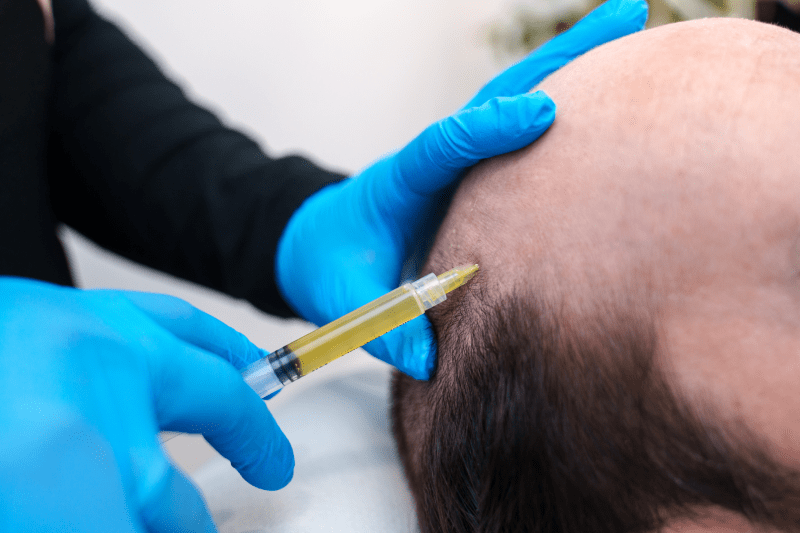
Can Mistakes Made In Hair Transplantation Be Reversed?
Unfortunately, not all mistakes made in hair transplantation can be fully reversed, which is why choosing the right clinic is so important. The most common mistakes include an unnatural hairline design, permanent thinning due to over-harvesting of the donor area, and incorrect angulation of the grafts. Some of these mistakes (e.g., a poorly designed hairline) can be partially corrected with a second revision surgery. However, if the donor area is completely depleted, it may not be possible to recover the lost hair follicles. You must work with an experienced and competent team to minimize these risks.
What Should Be Considered Before Getting A Hair Transplant?
Before making the decision to have a hair transplant, you must set your expectations on a realistic basis. You should receive an honest assessment from the clinic about the maximum result that can be achieved, considering your current hair condition, donor area capacity, and age. You should also ensure that the clinic has proven success not only with photos but also with long-term video testimonials. Checking for all legal documents, accreditations, and guarantees is vital.
Is The Permanence Of Hair Transplant Results Guaranteed?
Hair transplant typically uses hair follicles from the nape of the neck, which are usually genetically resistant to shedding. These follicles retain their genetic characteristics even when transplanted to their new location and will not fall out. Therefore, if the operation itself is successful, the transplanted hair is guaranteed to be permanent for life. However, your existing, non-transplanted hair may continue to shed; this is why clinics usually create a comprehensive plan that also takes into account the potential for future hair loss.
How Many Different Clinics Should Price Quotes Be Obtained From?
It is recommended that you obtain detailed analysis and price quotes from at least three different, high-quality clinics before making the decision for a hair transplant. This offers you the opportunity to see the perspectives of different specialists, compare the scope of the services offered, and gain a clear idea of the prices. When comparing quotes, you should focus not only on the total price but also on the quality of the services included in the package and the experience of the team performing the operation. Cure Holiday pre-filters and presents the best and most reliable options for you.
Why Are Testimonials From Hair Transplant Patients Important?
Long-term testimonials and references from patients who have undergone hair transplantation are the most reliable source for demonstrating the clinic’s real success and patient satisfaction. You should pay attention not only to photos taken immediately after the operation but also to testimonials showing results after 6 months and 1 year. These comments give you important clues about the clinic’s communication quality, post-operative support process, and the naturalness of the results. You should search for genuine user experiences shared on social media or forums. The clinic’s commitment to patient communication and follow-up is a strong indicator of its overall reliability and care quality.
